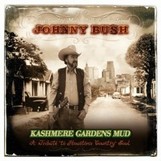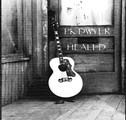FEATURES
50 YEARS OF VOX
Any design that remains the kid to beat for 50 years deserves its own chapter in the annals of tone. Mention “class A” and Vox’s AC30 and AC15 amplifiers come to mind first every time. Plus, an exclusive first look at the Vox AC15H1TVL. By Dave Hunter
AMP-O-RAMA
The Kustom K100
If ever a solidstate amplifier made a devoted valvehead abandon their beloved warm glow and soft clipping, it was a Kustom from the ’60s or ’70s. After all, it was good enough John Fogerty and Mike Campbell. By Dave Hunter
EC’s Crossroads Festival “II”
For 11 hours on July 28, 29,000 people in Chicago were treated to an amazing set of performances by some of guitardom’s biggest living legends. The occasion was the second edition of Eric Clapton’s Crossroads Guitar Festival. By Ward Meeker
D’AQUISTO NEW YORKER CLASSIC
From the premier archtop builder of an era, this 1986 version of John D’Aquisto’s foremost work represents the builder’s bridge between the traditional and the modernistic, as well as the end of one era and beginning of another. By George Gruhn and Walter Carter
MOLTEN MOJO
Gibson Goldtops Head-to-Head: Vintage vs. Reissue
When Les Paul whipped out his “goldtop,” there was no turnin’ back. Vintage examples now are priced beyond reach for most. So, do reissues make the grade? Plus, a look at the goldtop market. By Nathaniel Riverhorse Nakadate
THE FENDER PALOMINO
The Palomino represents Fender’s first foray into the world of acoustic guitar manufacturing and is tied to Roger Rossmeisl’s influence on American guitars. Behold the “broomstick,” whose failure speaks more to bad marketing than a bad instrument. By Michael Wright
BASS SPACE
The G&L L-5000
For Leo’s second go-round, he paid close attention to the market – and things that had potential for G&L. In the late 1980s that meant a foray into the land of the five-string bass. By Willie G. Moseley
DEPARTMENTS
DEPARTMENTS
Vintage Guitar Price Guide
Builder Profile
Gadotti Guitars
Upcoming Events
Vintage Guitar Classified Ads
Dealer Directory
The Great VG Hall of Fame Giveaway
Vote for your favorites, and you could win an Ampeg Dan Armstrong Plexi Guita
Readers Gallery
FIRST FRET
Reader Mail
News and Notes
Hiram Flagston Reads VG, Al Hendrickson: 1920-2007, Black Crowes new disc, Shimabukuro news, In Memoriam, more!
Steve Trovato
By Ann Wickstrom
Mark Farner
Messenger, Parker, and Patriotism
By Willie G. Moseley
Paul Brown
With Some Help From His Friends (and Family)
By John Heidt
Ask Zac
By Zac Childs
Peter Karp
Guitar For An “Ideas Guy”
By John Heidt
Daryl Stuermer
Deja Vu Fusion, Genesis Reunion
By Willie G. Moseley
Mark Kendall
Back to the Rhythm with Great White
By Steven Douglas Losey
Summer NAMM ’07
Small (But Rockin’) Party in Austin
By Dan Forte
COLUMNS
The (Way) Back Beat
A Pretty Girl is Like a Melody: Fretted Cheesecake Advertising Through the Years, Part II
By Peter S. Kohman
Q&A With George Gruhn
Acousticville
Repairs, Revisited
By Steven Stone
“401K” Guitars
Vintage, Not Niche
By Gil Hembree
Fretprints
Eddie Cochran
By Wolf Marshall
Guitars With Guts
Manuel de la Chica
By R.E. Bruné
TECH
Guitar Shop
Necessary Evil
By Tony Nobles
Dan’s Guitar Rx
Gas Attack!
By Dan Erlewine
Talkin’ Amps With…
Terry Kilgore: “The Tube Tramp” Tells the Truth
By David Jung
REVIEWS
The VG Hit List
Wes Montgomery, Chris Duarte, Duke Robillard, Widespread Panic, Roadwork: Rock and Roll Turned Inside Out, more!
Check This Action
Elvis is Everywhere
By Dan Forte
Vintage Guitar Gear Reviews
Savage Macht 12x, VVT Rick Derringer Hyperdrive, Empress Tremolo
Gearin’ Up!
The latest cool new stuff!






